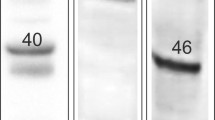Abstract
We have studied the effect of SR141716A (0.1–5 mg/kg, i.p.), a cannabinoid CB1 receptor antagonist, and WIN (0.1–5 mg/kg, i.p.), a cannabinoid receptor agonist, on acute defaecation and gastrointestinal transit in mice and on intraluminal fluid accumulation in the rat small intestine. SR141716A increased while WIN 55,212-2 decreased defaecation, gastrointestinal transit and fluid accumulation. A per se non-effective dose of SR141716A (0.3 mg/kg) counteracted the inhibitory effect of WIN 55,212-2 (1 mg/kg) on gastrointestinal functions studied. The effect of SR141716 on both intestinal fluid accumulation in rats and gastrointestinal transit in mice was inhibited by atropine (1 mg/kg, i.p.), but not by hexamethonium (1 mg/kg, s.c.), SR140333 (20 µg/kg, i.p.) or SR48968 (20 µg/kg, i.p.), antagonists of NK1 and NK2 receptors, respectively. These results suggest that intestinal fluid accumulation and motility are inhibited by endogenous cannabinoid(s) acting at the cannabinoid CB1 receptors. This effect may be mediated by mechanisms involving muscarinic cholinoceptors.
Similar content being viewed by others
Author information
Authors and Affiliations
Additional information
Received: 13 July 1998 / Accepted: 25 September 1998
Rights and permissions
About this article
Cite this article
Izzo, A., Mascolo, N., Borrelli, F. et al. Defaecation, intestinal fluid accumulation and motility in rodents: implications of cannabinoid CB1 receptors. Naunyn-Schmiedeberg's Arch Pharmacol 359, 65–70 (1999). https://doi.org/10.1007/PL00005325
Issue Date:
DOI: https://doi.org/10.1007/PL00005325




